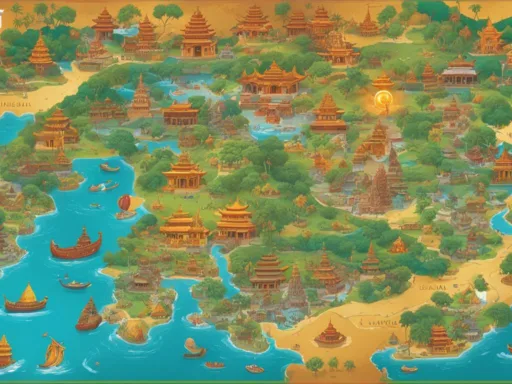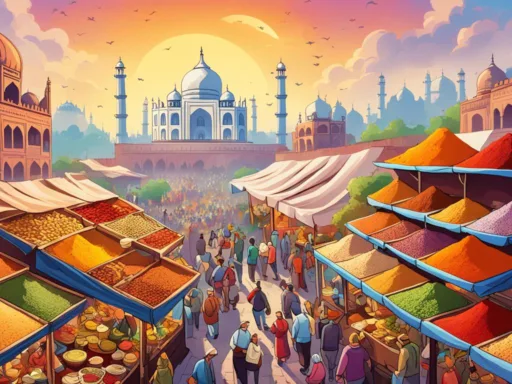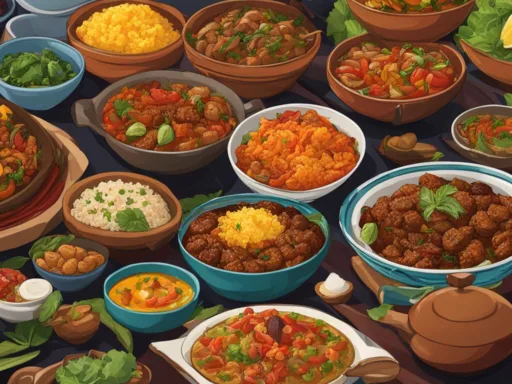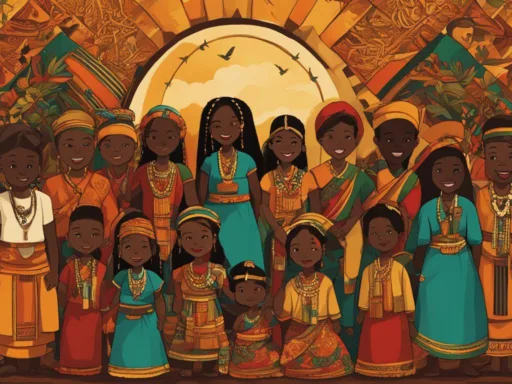Imagine a nation where the morning greetings range over 70 different languages—a testament to an extraordinary legacy of linguistic diversity. This is the reality in Pakistan, where a staggering array of languages flourishes, with many spoken as first languages. Such a multilingual canvas paints a picture of the country’s rich cultural heritage, influenced by a myriad of civilizations and empires throughout history. From the bustling streets of Karachi to the serene valleys of Swat, languages spoken in Pakistan resonate with stories of past and present, encapsulating the essence of Pakistani languages. In this linguistic kaleidoscope, Urdu stands out as the national language, symbolizing unity since 1947, while English, attributed to the colonial epoch, continues to assert its crucial role in Pakistan’s legislative, administrative, and educational domains. Whether through the melodious tones of Punjabi songs or the scholarly debates in English, the linguistic diversity in Pakistan is not just a feature of daily communication but also the bedrock of national identity.
Key Takeaways
- Over 70 languages showcase the remarkable linguistic diversity in Pakistan.
- Urdu’s role as a national language and English’s influence highlight the historical layers of Pakistani languages.
- The everyday dialogue in Pakistan spans a rich spectrum, from Urdu and English to regional tongues.
- Linguistic diversity is interwoven with Pakistan’s historical narrative and cultural identity.
- Pakistan’s multitude of languages reflects its dynamic and multilingual nature.
The Diverse Language Landscape of Pakistan
Embarking on a journey through Pakistan’s impressive tapestry of tongues reveals a nation rich in linguistic diversity, directly tied to its historical grandeur and cultural evolution. Unearthing the verbal gems scattered across the region, one can trace the routes of ancient traders, the proclamations of historical dynasties, and the timeless stories preserved in everyday speech.
A Cradle of Ancient Cultures and Modern Linguistic Variety
The land today known as Pakistan has long been a vessel of human civilization, harboring linguistic seeds from which grew a myriad of diverse dialects. The ancient soils that once cradled the Mehrgarh community during the Neolithic era also nourished linguistic variety, blossoming further with influences from the storied Indus Valley Civilization. This intricate historical puzzle pieces together a diverse language landscape in Pakistan, rooted in the depths of time and flourishing in modernity.
https://www.youtube.com/watch?v=dj7RzIR7VU4
Assessing the Multilingual Nature of the Nation
The palette of Pakistani vernacular is not monochromatic but rather a kaleidoscope, reflecting generations of multilingual mingling. This vibrant linguistic spectrum is informed by the continuous intermingling of ethnic groups, each contributing its own phonetic flair to the nation’s collective voice. It is this multicolored linguistic mosaic which encapsulates the essence of Pakistan‘s societal fabric.
The Influence of Historical Dynasties on Pakistan’s Languages
Time’s passage has seen empires rise and fall, each leaving an indelible linguistic imprint on the land that is modern-day Pakistan. The Abbasid caliphate’s reach extended not only in governance but also in the spoken word, molding the linguistic landscape. The epoch of the Mughals particularly fortified the stature of Persian, embedding it in the hearts of those who still treasure its elegance today, despite the British Empire’s later imposition of English which reordered the linguistic hierarchy once more. These transitions embody the historical influence on Pakistani languages, showcasing a history that speaks—not just through records or artifacts—but through the living, breathing language of its people.
| Era | Dominant Languages Introduced | Cultural Influence |
|---|---|---|
| Neolithic/Mehrgarh | Proto-dravidian language elements | Foundational agricultural practices and city planning |
| Indus Valley Civilization | Harappan language (undeciphered) | Advanced urban culture and trade networks |
| Abbasid Caliphate | Classical Arabic | Scientific, literary, and spiritual discourse |
| Mughal Empire | Persian | Artistic expression and administrative communication |
| British Colonialism | English | Legal, administrative, and educational system |
Languages Spoken Pakistan: A Closer Look
The linguistic variety of Pakistan mirrors the complex tapestry of its history and culture, making the languages of Pakistan not only tools for communication but also emblems of regional identity. At the forefront of the most spoken languages in Pakistan, Punjabi claims the spot as the primary language for nearly half the population. Its significance is felt across daily life, reflecting the vibrancy of Punjab’s rich cultural heritage.

Following Punjabi, a cascade of languages including Pashto, Sindhi, Saraiki, Urdu, and Balochi contribute to Pakistan’s linguistic variety, each representing the unique identity of their respective speakers. These languages, intertwined with traditions, literature, and folklore, enrich the societal spectrum of the nation. Below is a snapshot encapsulating the prominence of these languages:
| Language | Speakers | Region | Cultural Significance |
|---|---|---|---|
| Punjabi | Approx. 110 million | Punjab | Extensive folklore and literature |
| Pashto | Approx. 26 million | Khyber Pakhtunkhwa | Rich poetic tradition |
| Sindhi | Approx. 24 million | Sindh | Historical literature and Sufi mysticism |
| Saraiki | Approx. 20 million | South Punjab | Cultural music and dance traditions |
| Urdu | Native: Approx. 70 million Total: Over 160 million | Nationwide | National language, literary and cinematic contributions |
| Balochi | Approx. 7 million | Balochistan | Oral history and traditional crafts |
Beyond these widely spoken dialects, other regional languages such as Shina, Kashmiri, and Brahui are hallmarks of Pakistan’s linguistic diversity, each adding to the multifaceted language narrative of the country. With over a million speakers, they provide invaluable connections to Pakistan’s past and present societies.
Official and National Languages of Pakistan
In the realm of cultural unity and administrative efficiency, the official languages of Pakistan play a pivotal role. These languages not only facilitate communication across the multifaceted ethnic spectrum of the country but also provide the framework within which the nation operates on both local and international stages.
Urdu – The Lingua Franca of Pakistan
The national language of Pakistan, Urdu, holds a position of immense significance. Although it is the primary language for only a fraction of the population, its influence permeates every facet of Pakistani society. Urdu’s historical roots as the lingua franca during the time of the British Raj have made it a unifying force, a tool for bridging the diverse linguistic communities across the country.

Urdu’s adoption has been a conscious effort to foster national solidarity, and its prominence is evident in the cultural, educational, and official discourse. As the national language of Pakistan, Urdu is celebrated for its literary richness and is extensively used in media, literature, and education, weaving a common thread amongst Pakistanis from different ethnolinguistic backgrounds.
English – The Language of Legal and Administrative Affairs
In addition to Urdu, English retains its esteemed status as a co-official language. Rooted in the country’s colonial past, English in Pakistan serves as an essential medium within the domains of law, government, and higher education. Its widespread usage in these areas underlines the language’s integral role in the nation’s governance and international relations.
The prevalence of English in legal and administrative documents, the legislative process, and the country’s constitution speaks to its importance. It is a cornerstone for those maneuvering through the corridors of power and higher education, distinguishing itself as a marker of socio-economic status. Furthermore, English is a driving force in the global market, equipping Pakistanis with the linguistic toolset necessary to negotiate and collaborate on the world stage.
Understanding the dynamics of Urdu and English in Pakistan provides insight into the unique fabric of the country’s identity and its ongoing narrative of linguistic unification and global participation.
Regional and Provincial Languages
The tapestry of regional languages in Pakistan not only embodies the nation’s rich heritage but also underscores the inherent diversity that defines the country’s socio-cultural fabric. With impactful historical roots and a strong sense of local identity, these tongues continue to shape the lived experiences of their speakers and the regions they inhabit.
Punjabi: The Prevalent Language of the Punjab Province
Punjabi, as the predominant language spoken in Pakistan’s Punjab province, articulates the cultural vibrancy and tonal dynamism unique to this area. Home to a significant proportion of the nation’s population, Punjabi in Pakistan resonates through literature, music, and folk traditions that are intrinsic to Punjabi identity.
Sindhi: The Historical Language of the Sindh Region
The Sindhi language holds paramount importance for the people of Sindh, swathed in an ancient legacy that is both literary and cultural. Revered for its vast corpus of Sufi poetry and prose, the Sindhi language importance stands as a beacon of regional pride and historical continuity.
Other Notable Regional Languages
Beyond the well-known linguistic giants of Punjabi and Sindhi, Pakistan flourishes with other regional languages that contribute significantly to the nation’s linguistic mosaic. Saraiki, Pashto, and Balochi each serve as cultural cornerstones in their respective locales, further accentuating Pakistan’s status as a cradle of regional languages in Pakistan.

| Language | Region | Number of Speakers (approx.) |
|---|---|---|
| Punjabi | Punjab | 100 million |
| Sindhi | Sindh | 25 million |
| Saraiki | South Punjab | 20 million |
| Pashto | Khyber Pakhtunkhwa | 40 million |
| Balochi | Baluchistan | 8 million |
The Linguistic Mosaic of Pakistan’s Ethnic Groups
Pakistan’s ethnolinguistic groups paint a vivid tableau of cultural and linguistic affluence, each one holding the essence of its own distinct narrative. The array of ethnic languages in Pakistan contributes significantly to the identity and heritage of its diverse communities. In the dynamics of language and identity in Pakistan, languages serve as pivotal pillars that uphold not just communication, but the intricate matrix of societal relationships.
Understanding Pakistan’s Ethnolinguistic Diversity
The ethnic languages in Pakistan are as varied as the landscapes from which they hail. Take, for example, the melodic cadence of the Kashmiri language, resonating with the serenity of the region’s valleys, or the vibrant Balochi tongue, echoing the arid resilience of Balochistan’s terrain. These languages are not mere dialects but are carriers of civilization, whispering the lore of the land and its people through time.
How Ethnic Languages Shape Identity and Community
At the heart of Pakistan’s cultural identity lies a deep connection between language and the ethos of its ethnic groups. From the bustling streets of Lahore where Punjabi proverbs are shared, to the scholarly discussions in Sindhi at the tombs of Sufi saints in Sindh—each language is a thread in the fabric of Pakistani society. Language shapes community bonds and fosters a shared sense of history and destiny.
As Pakistan evolves, it holds steadfast in its dedication to celebrating this diversity, ensuring the harmonic co-existence of its many voices. Through media broadcasts in countless dialects to the implementation of multilingual education, Pakistan strives to both cherish and preserve its linguistic heritage. This vibrant ethnolinguistic map remains a testament to the nation’s solidarity amidst the splendor of its diversity.
The Status of Minority Languages in Pakistan
The intricate fabric of Pakistan’s culture is woven with the threads of numerous languages, many of which find their roots in small, localized communities. These minority languages in Pakistan, though spoken by fewer, are vital threads preserving the nation’s vibrant linguistic tapestry. However, in the wake of globalization’s sweeping influence, these languages confront challenges that threaten their very existence, prompting a concerted effort towards linguistic heritage preservation.
Preserving Linguistic Heritage Amidst Globalization
The impact of globalization on languages has been profound, with minority languages experiencing increased vulnerability. In a country where a handful of languages dominate the mainstream, the fight to preserve the linguistic diversity entails both recognizing the value of these languages and implementing measures to safeguard them. Advocates for linguistic diversity argue that the assimilative pressure of global cultures endangers the unique linguistic identities preserved in Pakistan’s minority languages.
The need to preserve minority languages is not solely for the purpose of maintaining communication; it is to uphold the cultural knowledge, history, and identity that these languages embody. As repositories of folklore, customary laws, and oral traditions, these languages offer insights into the very soul of their respective ethnic groups.
Efforts to preserve Pakistan’s linguistic heritage must be multi-faceted, involving community-driven initiatives, supportive educational policies, and national recognition. Such endeavors are essential not only for the survival of these languages but also for offering a channel through which future generations can explore and appreciate the intricacies of their ancestral heritage.
Foreign Languages Influence and Their Significance
Within the borders of Pakistan, the enmeshing of foreign languages and the local culture is a testament to the nation’s complex historical and modern-day interactions. As Pakistan navigates its future, understanding this intertwining is essential to appreciating the nuanced influences shaping its society.
The Impact of Arabic on Pakistani Society
Arabic, more than just a language, is a cultural and religious cornerstone for Pakistani Muslims. Its pervasive influence extends from the intricate calligraphy adorning mosques to the rich oral traditions and textual studies of Islamic scholarship. Influenced by centuries of Arabic scholarship, Pakistan’s religious education systems place a high premium on the mastery of this revered language, ensuring that Arabic remains deeply rooted in the societal framework.
English and Its Role in Education and Mobility
Contrasting with the traditional hues of Arabic, English language education in Pakistan depicts a modern canvas of international communication and opportunity. English, recognized as a formidable tool, paves avenues for academic and professional growth, and attracts individuals aiming for elevated social stature and global connectivity. As a byproduct of colonial legacy paired with contemporary necessity, English holds a spot at the apex of educational priorities.
| Language | Influence on Society | Role in Education |
|---|---|---|
| Arabic | Religious practices, legal systems, and cultural norms | Religious studies, Qur’anic interpretation |
| English | Access to global markets, international diplomacy, and socioeconomic status | Academia, research, professional development, and social mobility |
The juxtaposition of Arabic and English within Pakistani culture underscores the fascinating balance between heritage and progress, reverent tradition, and aspirational modernity. The efficacy of foreign languages in Pakistan contributes not only to intricate societal layers but also to Pakistan’s evolving identity on the world stage.
Language Families and Their Distribution Across Pakistan
Pakistan’s language tapestry is rich with history and vitality, woven from threads of ancient migrations and cultural exchanges. In this diverse linguistic fabric, the prominent language families in Pakistan shape the nation’s voice, each with its own tale and domain.
The Indo-Aryan and Iranic Language Groups
The vast majority of Pakistani languages belong to the Indo-Aryan languages family. This group includes widely spoken languages like Sindhi, which flourishes in Sindh, and Punjabi, the heart-tongue of Punjab’s folks. Urdu, the national language, also shares this lineage, adding to the family’s prevalence. Simultaneously, the Iranic language distribution paints a different picture, with languages like Pashto and Balochi providing insight into the cultural imprints of the region’s western heritage.
Languages in Pakistan are not mere means of communication; they are the very essence of identity for many communities. Below, we have illustrated the distribution of some prominent Indo-Aryan and Iranic languages within Pakistan:
| Language Family | Languages | Region Predominant |
|---|---|---|
| Indo-Aryan | Punjabi, Sindhi, Seraiki, Urdu | Punjab, Sindh, parts of Khyber Pakhtunkhwa |
| Iranic | Pashto, Balochi | Khyber Pakhtunkhwa, Balochistan |
This distribution not only reflects the physical landscape of Pakistan but also the cultural contours that shape each region’s spirit. Whether it’s the poetic cadence of an Indo-Aryan language or the assertive resilience in an Iranic tongue, the symphony of Pakistan’s languages is a testament to a story rich with complexity and nuance.
Conclusion
The tapestry of Pakistan’s linguistic heritage is richly woven with threads of **cultural diversity**, echoing through the corridors of time from ancient civilizations to the present day. The evolution of society within this region is intricately connected to the multitude of languages that have blossomed throughout its history, contributing to a strong and distinctive **linguistic identity**. This impressive array of dialects and tongues is much more than a means of communication; it stands as a testament to the country’s **linguistic evolution**, mirroring the societal transformations that have occurred over millennia.
Each language practiced in Pakistan, from the dominant Urdu to the lesser-known dialects teetering on the edge of survival, adds a unique dimension to the nation’s identity, shaping its social, cultural, and political narrative. These languages are the lifeblood of the **cultural diversity in Pakistan**, forming the bedrock of traditions and collective memory. In the age of globalization, it is important to recognize that the ongoing interplay between local and global influences will be pivotal in charting Pakistan’s cultural and developmental journey.
To safeguard this irreplaceable cultural wealth, there is a dire need for policies that nurture and protect Pakistan’s various languages. Such measures would ensure that the legacy of linguistic diversity is not only maintained but flourishes for future generations, fostering a rich cultural pluralism. As Pakistan continues to forge its path in a globalized world, its commitment to embracing and promoting its linguistic assets will be key to upholding the nation’s rich heritage and shaping a dynamic and inclusive future.
FAQ
What languages are spoken in Pakistan?
Pakistan is a multilingual country with over 70 languages spoken across its regions. The most widely spoken languages include Urdu, Punjabi, Pashto, Sindhi, Saraiki, and Balochi, among others.
How does the diverse language landscape of Pakistan reflect its history?
The diverse language landscape in Pakistan is a result of its rich historical tapestry, including ancient civilizations such as Mehrgarh and the Indus Valley Civilization, influences from various dynasties including the Abbasids and Mughals, and periods of British colonial rule, resulting in a complex mix of regional languages and dialects.
Which languages are the most spoken in Pakistan?
The most spoken language in Pakistan is Punjabi, with almost 40% of the population using it as their first language. Other widely spoken languages include Pashto, Sindhi, Saraiki, and Urdu.
What are the official languages of Pakistan?
The official languages of Pakistan are Urdu and English. Urdu serves as the national language and is used widely as a lingua franca, while English is used in government, legal affairs, and higher education.
Are there regional languages recognized in Pakistan?
Yes, Pakistan hosts a variety of regional languages such as Punjabi, Sindhi, Pashto, Saraiki, and Balochi, each prominent within its respective province and crucial to the cultural identity of the inhabitants.
How do ethnic languages shape identity in Pakistan?
Ethnic languages in Pakistan play a significant role in shaping the identity and community of various ethnic groups. They are closely tied to cultural practices, traditions, and the collective heritage of the speakers.
What is the status of minority languages in Pakistan?
Minority languages in Pakistan, spoken by smaller ethnic groups, are considered precious to the cultural diversity and heritage of the nation. However, many are at risk of disappearing due to globalization and the dominance of wider spoken languages.
What foreign languages have influenced the linguistic landscape of Pakistan?
Arabic has deeply influenced Pakistani society through religion, while English has played a significant role in the nation’s education system and is associated with higher socioeconomic status and mobility.
What are the major language families present in Pakistan?
The major language families in Pakistan are the Indo-Aryan languages, which include Urdu, Punjabi, Sindhi, and Saraiki, and the Iranic languages, including Pashto and Balochi.






